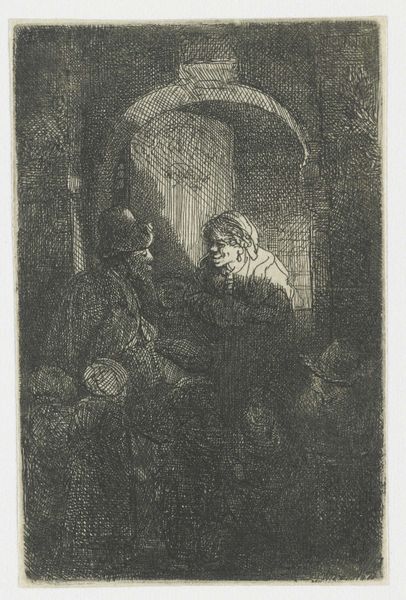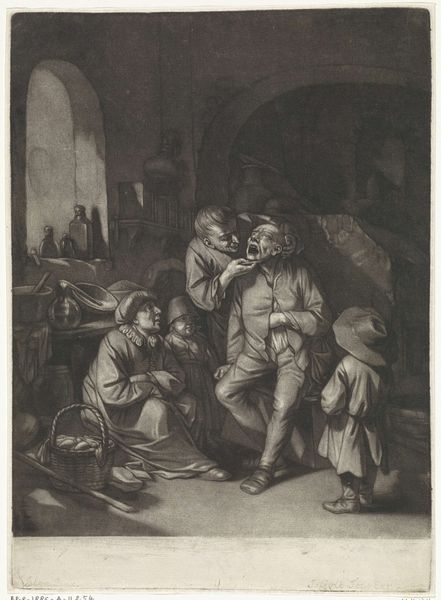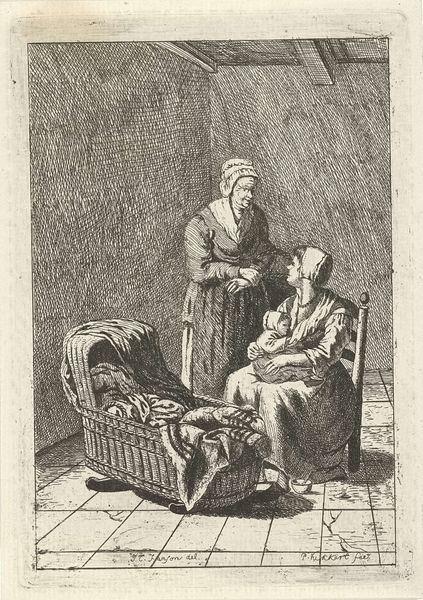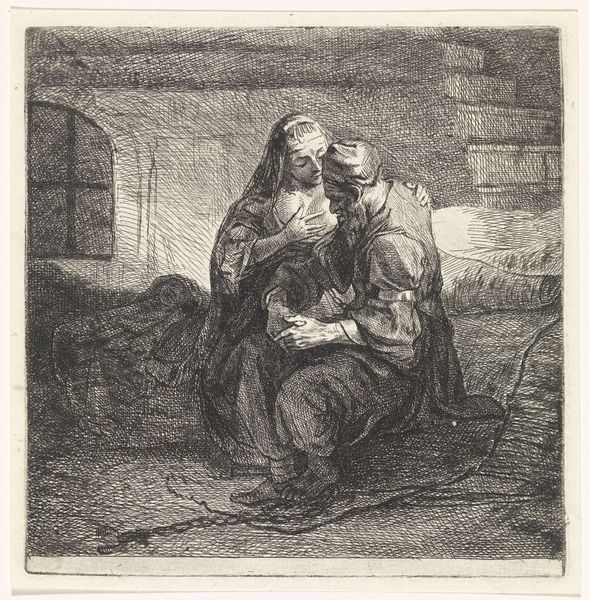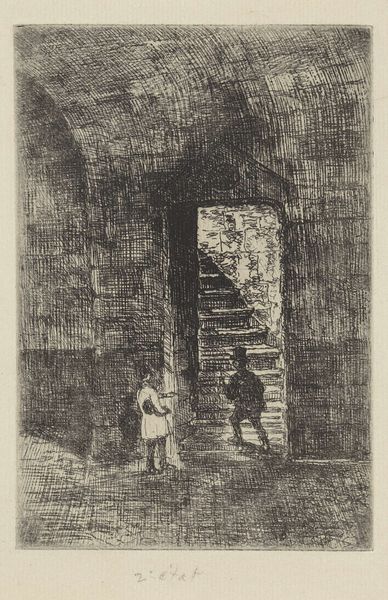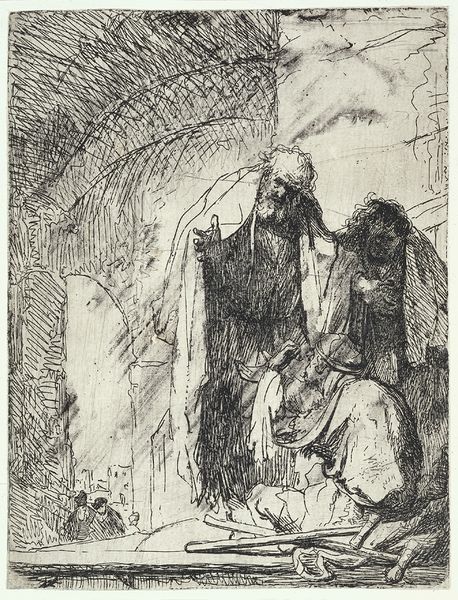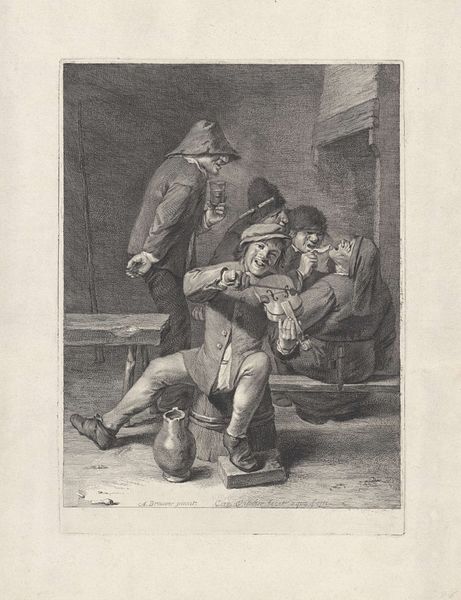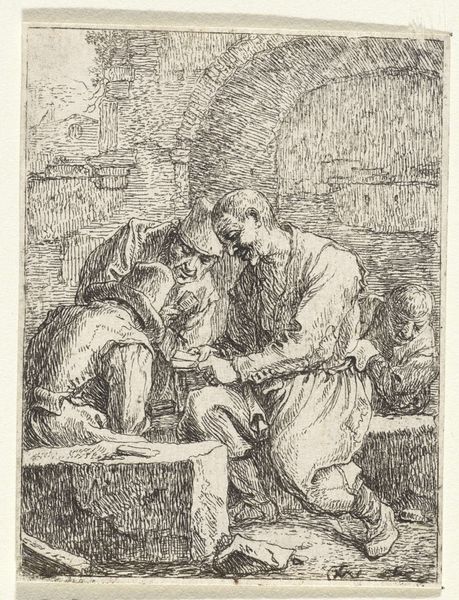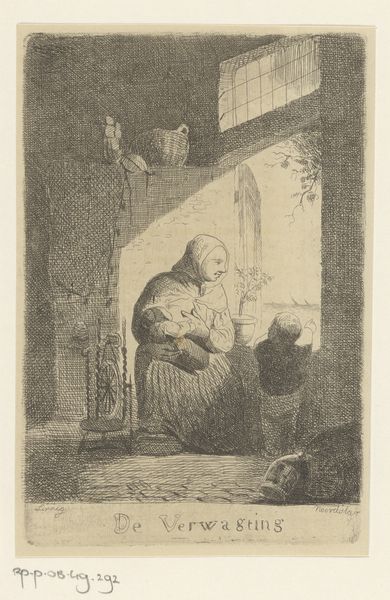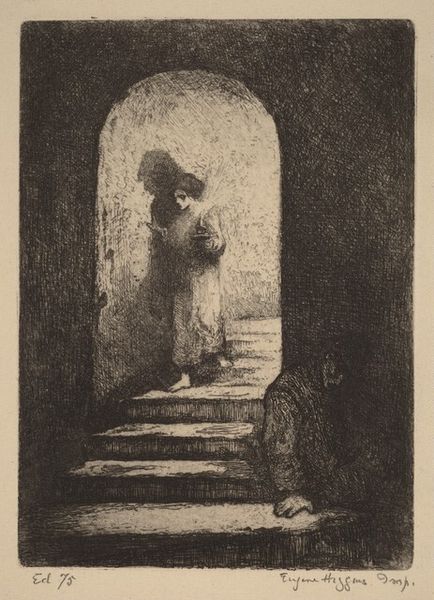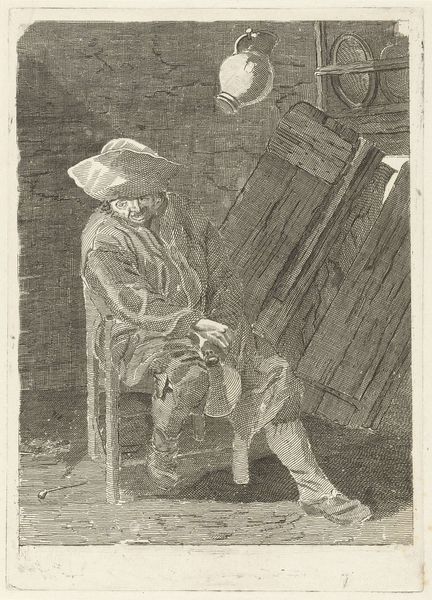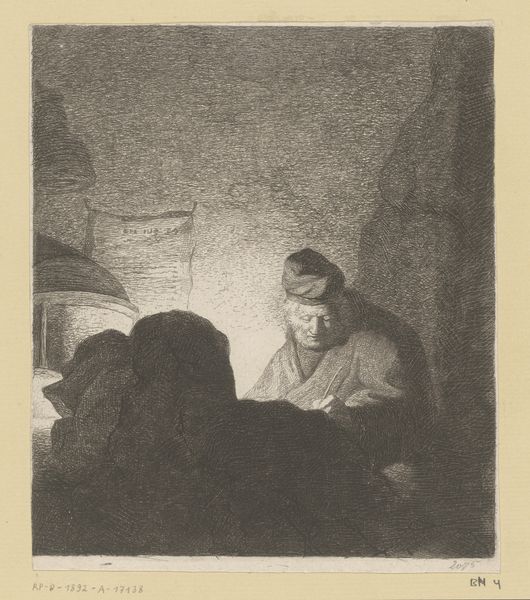
drawing, paper, ink, pencil
#
pencil drawn
#
drawing
#
narrative-art
#
baroque
#
pencil sketch
#
figuration
#
paper
#
ink
#
pencil drawing
#
pencil
#
genre-painting
Dimensions: height 127 mm, width 101 mm
Copyright: Rijks Museum: Open Domain
Bernard Picart created this etching, "Pero zoogt de geketende Cimon in de gevangenis", sometime in the late 17th or early 18th century. It illustrates a story of familial devotion overcoming the apparent laws of nature. The scene depicts Pero, daughter of the imprisoned Cimon, nursing her father to prevent him from starving to death. This popular story, known as Roman Charity, has been told through the ages. It was especially popular during the Baroque era. The image challenges social norms by placing the natural bond between parent and child above legal authority. Picart was a French engraver who spent much of his career in Amsterdam. He was thus working within the political structures of the Dutch Republic. As a commercial artist, he would have been aware of how best to appeal to a broad audience and what messages would find the most traction. To understand images like these, we look to the social and institutional histories of art production. Only then can we can gain insight into the messages they were trying to convey.
Comments
No comments
Be the first to comment and join the conversation on the ultimate creative platform.

